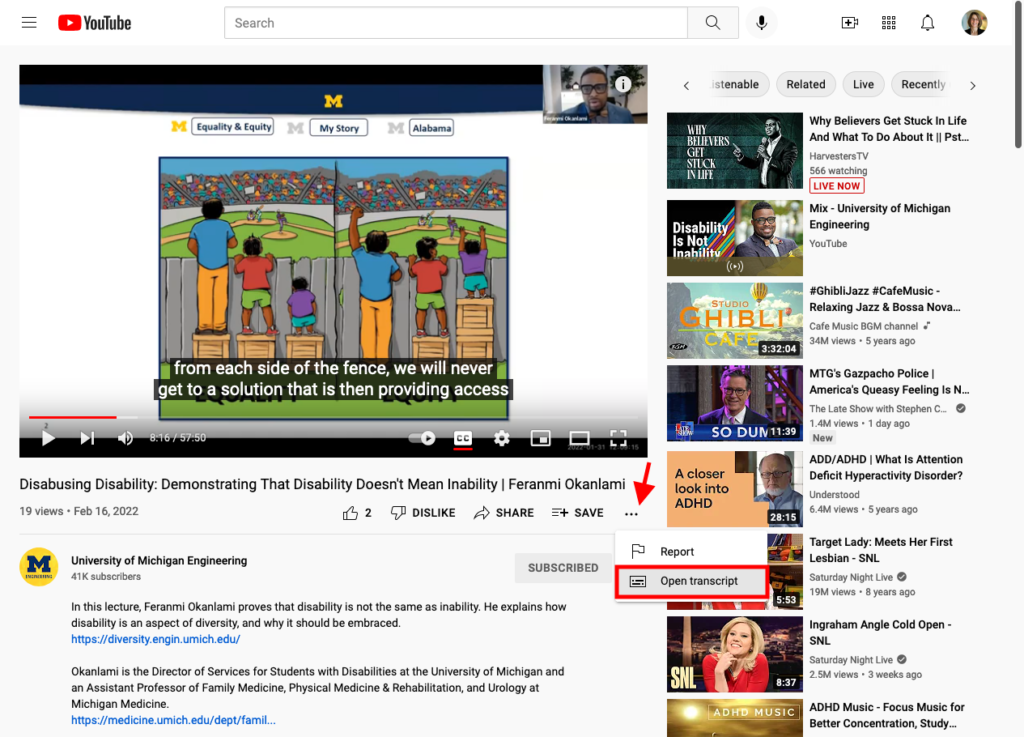Hi, and welcome to the University of Michigan’s College of Engineering. I’m
Rahul, a senior here, and I’ll be your tour leader today.
Typically this is a
presentation I’d be giving to you in person.
However, in these trying times, we couldn’t host you in Ann Arbor. But we
still wanted to share with you our awesome campus.
I hope you enjoy the
video we’ve created especially for you!
Right now what we’re looking at is the
Duderstadt Center. The Duderstadt library is one of our more popular libraries
here on North Campus and is fondly referred to as The Dude.
It is open 24/7
throughout the year, which means whether you like studying at 2:00 p.m. or 2:00
a.m., The Dude can be a great place for you.
There are so many more things to do
than just study in our libraries.
For example, our fabrication studio is
available where you will be able to work on class and personal projects,
and you’ll be able to use different laser cutters, 3D printers, and tools.
We are now at the Bob and Betty Beyster Building.
Right now our CS faculty and students in
cybersecurity are working to make our election systems more secure.
This building is an excellent example of demonstrating the progression of
engineering.
At our entrance we have a very small piece of the ENIAC, one of
the first digital computers ever built. On the other side we have a completely
programmable staircase that our students can explore and hack into.
You can see art sculptures all over North Campus and we love to showcase
our students creativity and projects/
This is believed to be the world’s
largest stationary, hand solvable Rubik’s Cube.
It was imagined, designed, and built by two teams of engineering undergraduate
1:46 students over the course of three years.
1:49 Here are some examples of our classrooms.
1:51 We try to create a dynamic and interactive learning environment. Most of
1:56 our classes are recorded making it extremely easy for our students to
1:59 review and study.
You’ll be raising intriguing questions in lecture and
2:04 following discussions with professors that have the potential to transform
2:07 into your own research projects
2:11 What we’re looking at right now is the Structures Lab. It’s one of our testing
2:16 facilities. Our engineers use a combination of the strong wall, floor,
2:20 hydraulic pumping mechanisms, and computerized models to simulate
2:24 real-world conditions inside.
2:27 We have strong connections with industry here at
2:29 Michigan and the FSB atrium is a shining example.
2:33 In 1965, NASA sent Gemini 4 into
2:36 space, which had the first all Michigan crew.
2:39 One of our alumni was the first
2:40 American to perform a spacewalk. A few years later as part of the Apollo 15
2:45 mission, an all Michigan crew was the fourth team to land on the moon. next
2:49 time you’re here on campus you’ll have a chance to see a small piece of outer
2:52 space in the form of our very own moon rock.
2:59 Right around the corner from the FSB we have M-Air, a 10,000 square foot,
3:04 four-story netted scientific facility that enables the study of autonomy and
3:09 collaborative robotics in the wild, with emphasis on dealing with the full range
3:13 of Michigan weather.
3:15 Opening later in the year, the Ford Robotics Building will
3:18 become the home of Michigan Robotics. The 140,000 square foot complex will house
3:23 classrooms, offices, a startup-style open collaboration area, and tailored lab
3:28 space for a variety of robotic technologies. The building will include a
3:32 three-story fly zone for autonomous aerial vehicles, an outdoor obstacle
3:36 course for self-driving cars, and dedicated space for rehabilitation and
3:39 mobility robots, such as prosthetics and exoskeletons. And if that wasn’t enough
3:44 for you, just down the road we have MCity, our own advanced mobility
3:48 Research Center. Michigan created MCity to realize the potential for emerging
3:52 mobility technologies. Our partners in industry, government, and academia, are
3:56 MCity’s foundation, and the reason it has become a leader in connected and
4:00 autonomous vehicles.
4:05 This is the Wilson Student Team Project Center. It empowers
4:08 student teams by providing a facility in which they can experience hands-on
4:11 development and fabrication. It allows members to use a practical application
4:15 of engineering. The Wilson Center provides groups with a unique
4:19 opportunity to interact with one another, share ideas, and showcase their projects—
4:23 like our Solar Car Team, MFly, Baja Racing, and so many more.
4:33 We are now inside the Lurie Nanofabrication Facility, where our
4:36 researchers work on the nanometer scale. If you’re wondering, one nanometer is
4:41 about the length that your fingernails will grow in one second.
4:44 The LNF is here to provide our faculty and students access to advanced nano
4:49 fabrication equipment.
4:51 The last thing I wanted to show you is our electrical
4:53 engineering and computer science building. Here we are creating the
4:56 technology that puts the smart into smart electronics and constantly pushes
5:00 the boundaries of research.
5:03 One of our more recent projects showcases this very
5:05 principle.
5:07 This is Michigan Micro Mote, M3 for short. M3 is the world’s smallest
5:12 computer and has opened the door to a completely new class of computing.
5:18 Thank you so much for watching.
5:21 Whether you’re exploring the cutting
5:23 edge of research, solving giant Rubik’s cubes, or just studying at The Dude, this
5:27 is just a small sample of what we have to offer.
5:30 We hope to see you on campus soon!
5:32 Go Blue!
